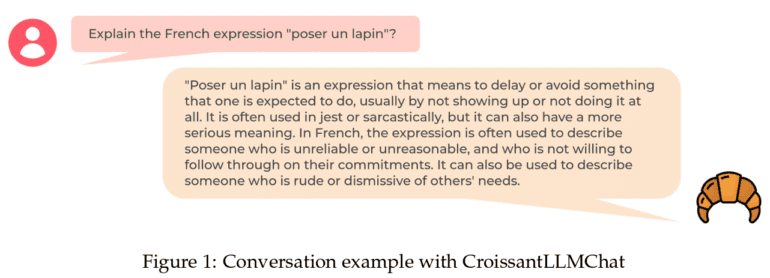TL;DR:
- CroissantLLM introduces a groundbreaking bilingual model catering to both English and French.
- Developed through collaboration among renowned institutions and companies.
- Addresses the limitations of English-centric language models, fostering inclusivity in NLP.
- Balanced training on 3 trillion English and French tokens with a 1:1 ratio.
- Demonstrates exceptional performance in understanding and generating text in both languages.
- Sets new benchmarks in bilingual language processing, surpassing existing models.
- Signifies a shift towards language equality and inclusivity in AI research and applications.
Main AI News:
In today’s AI landscape, dominated by English-centric language models (LMs), CroissantLLM emerges as a game-changer. Developed by a collaborative effort among leading institutions and companies, including Illumina Technology, Unbabel, and INESC-ID Lisboa, this revolutionary model offers robust bilingual capabilities in both English and French, bridging the linguistic gap that has long hindered inclusivity in Natural Language Processing (NLP).
CroissantLLM’s genesis lies in recognizing the limitations of English-dominated data in LM training. Traditional models, biased towards English, struggle to perform adequately in non-English contexts, highlighting the pressing need for truly bilingual solutions. Conventional approaches have overlooked this necessity, focusing predominantly on enhancing English proficiency, leaving a void in multilingual contexts.
Addressing this challenge head-on, CroissantLLM adopts an innovative methodology, ensuring balanced training on English and French data. Pre-trained on a massive dataset of 3 trillion tokens, with an equal English-to-French ratio, this model sets new standards in bilingual LM development. A meticulously crafted tokenizer and bilingual fine-tuning datasets further enhance its performance, distinguishing CroissantLLM from its predecessors.
The effectiveness of CroissantLLM’s approach is evident in its performance metrics. Setting new benchmarks in bilingual language processing, the model excels in understanding and generating both English and French text. Validated through the groundbreaking benchmark FrenchBench, CroissantLLM surpasses existing monolingual and bilingual models, thanks to its curated dataset and innovative training strategies.
Beyond academia, CroissantLLM’s success holds profound implications for NLP applications. By challenging the linguistic bias inherent in previous models, fosters inclusivity and equity in AI. Its development signifies a shift away from the English-centric paradigm, enriching our understanding of multilingualism in LM research. The transparency of the research team, sharing codebases and checkpoints, further accelerates progress in large LM innovation.
Conclusion:
CroissantLLM’s groundbreaking bilingual innovation signifies a significant step towards linguistic equality in the AI market. Challenging the dominance of English-centric models and offering robust bilingual capabilities, opens doors to more inclusive NLP applications. This shift not only enriches the understanding of multilingualism but also presents new opportunities for businesses and researchers to embrace linguistic diversity in their AI endeavors.

